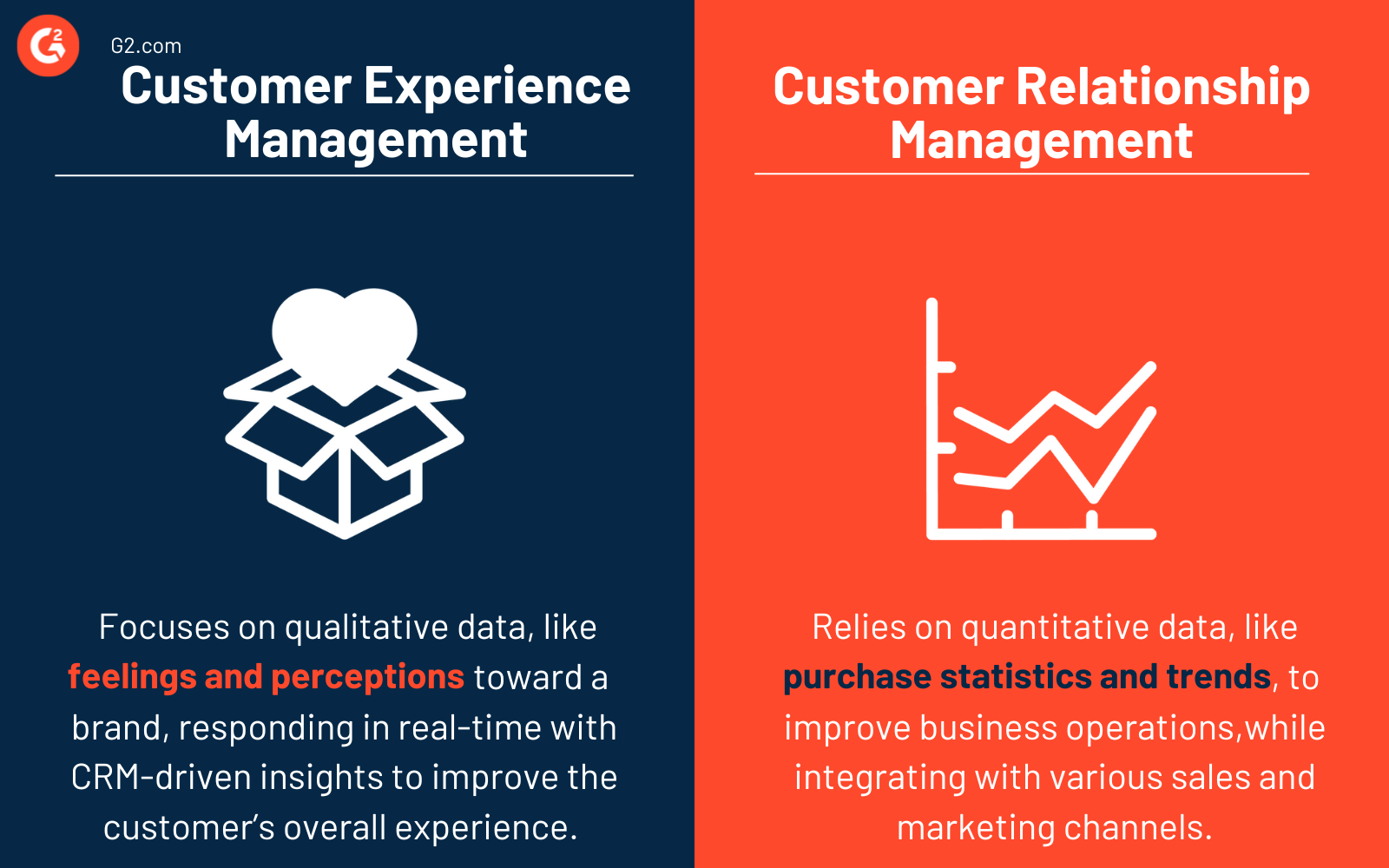What is customer experience management?
Customer experience management, or CXM, is how businesses manage customer interactions that prioritize a personalized experience for each client at every touchpoint.
The goal of CXM is to put the primary focus of the business on the customer. Using experience management software, companies can track relationship data across the full customer lifecycle and adjust individual experiences to drive increased profits through improved engagement.
Types of customer experience management
Because it’s so important to all aspects of customer experience, businesses should familiarize themselves with these five types of CXM.
- Emotional. The goal here is to leave the customer feeling positive about their experience. Fostering a friendly customer service team is one of the best ways to make sure the customer is happy at the end of their interaction.
- Cognitive. Efficiency is the most crucial part of cognitive CXM. Customers want to find what they’re looking for quickly and want their questions answered satisfactorily. Cognitive CXM is about helping customers make decisions regarding a purchase.
- Behavioral. Customers demand consistency, so behavioral CXM must concentrate on offering the same level of service to the customer at every interaction. This is important for retaining customers.
- Sensory. Like emotional CXM, sensory experiences focus on how the customer feels, but these experiences are more tangible than emotional ones. This CXM could involve creating a visually appealing in-store experience or giving customers a unique and memorable interaction with the brand.
- Brand experience. Although all aspects of CXM focus on the brand experience, additional components should be addressed. Every interaction should clearly reflect the company’s mission, vision, or image. This makes the brand memorable for the customer when they think about the product or service being sold.
Basic elements of customer experience management
How businesses define how they run their CXM is based on the brand itself and how they want their customers to interact with them. Building an effective CXM strategy should always include:
- Identifying customer needs. The best customer experience is the one that matches or exceeds expectations. To do this, businesses must deeply understand what customers want. It’s also important to acknowledge that not every customer needs the same outcome and to incorporate flexibility within CXM programs.
- Gathering qualitative customer data. Qualitative data is harder to understand than quantifiable data, so finding a way to make CXM data trackable and open to analysis is essential. Creating customer journey maps and customer personas can support gathering this information and making it actionable.
- Incorporating data into the brand culture. Information gathered in customer relationship management (CRM) should be reviewed alongside CXM findings. This should all funnel into everything the brand does, from sales and marketing to product development and customer service. Responding to customer concerns or questions through tangible changes within the brand demonstrates empathy and often leads to more engaged, loyal customers.
Benefits of customer experience management
While CXM benefits public relations (PR), this should never be the primary focus for investing in a management program. Instead, companies should center customer experience management that can:
- Give the business deeper knowledge of customers. The more a business knows about its customers, the greater the opportunity to connect with them meaningfully. Segmentation of an audience as a result of this knowledge can lead to more personalized experiences and greater sales.
- Improve loyalty and customer retention. Customers want to feel that their needs are being met. When a CXM program is successful thanks to a unified and personalized customer journey, those customers are more likely to stay true to the brand.
- Be a defining competitive advantage. Not every business is focused on creating a customer-centric brand, but those that do improve customer satisfaction and lower their churn rate, making them more competitive in their industry.

More than your average newsletter.
Every Thursday, we spill hot takes, insider knowledge, and news recaps straight to your inbox. Subscribe here
Best practices for customer experience management
Businesses have dozens of ways to manage their customer experience properly. Some of the most effective are:
- Providing real-time support. Customers with concerns or questions want help fast. Studies have found that over 70% of customers want support on the same day, with only 34% finding it within one week to be acceptable. Businesses that can solve customer problems faster are more likely to see those customers returning in the future.
- Monitoring social media. Using social listening software, companies can gather more data about what customers think of the business without direct interaction with the customer. This is a useful way to discover feedback on customer pain points or thoughts on products and services, offering a chance to make changes before a customer engages with the brand directly.
- Training team members frequently. This is especially critical for employees who have direct communication with customers. Using insights gathered in CRM and CXM, teams should be trained on new business policies and general customer service techniques to improve their responses.
Customer experience management vs. customer relationship management (CRM)
Although similar, CXM and CRM are different.

Customer experience management focuses more on qualitative data like feelings and perceptions toward a brand, responding in real-time with CRM-driven insights to improve the customer’s overall experience. CXM is a step beyond CRM with a more defined customer-centric outlook.
CRM relies on quantitative data, like customer purchase statistics and trends, to better business operations as a whole and, at the same time, integrate with various sales and marketing channels.
Give customers the support they need and answer their questions as quickly as possible with live chat software.

Holly Landis
Holly Landis is a freelance writer for G2. She also specializes in being a digital marketing consultant, focusing in on-page SEO, copy, and content writing. She works with SMEs and creative businesses that want to be more intentional with their digital strategies and grow organically on channels they own. As a Brit now living in the USA, you'll usually find her drinking copious amounts of tea in her cherished Anne Boleyn mug while watching endless reruns of Parks and Rec.


















